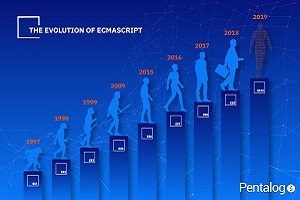Making sure information is shared between all the parties involved, managing the recruitment of team members, updating the KPIs and keeping the project well on track—as many challenges to address as there are responsibilities for a Project Director.
What exactly does the work of a Project Director involve? How do they contribute to the success of an outsourced IT project?
With over eight years of experience as a Project Director, here is how I would define my role:
The Project Director is a practitioner of the Agile methodology with a 360° view of the project at every stage of its development. They represent the bandleader for the project, coordinating the activities of the outsourced team with the dynamic requirements of the client.

Highly cross-functional, the Project Director oversees every facet of the project to make certain it moves forward successfully. Contact us!
What Are the Day-to-Day Duties of a Project Director?
When assigned an IT project, my duty is to manage every step of the project’s life cycle, from drawing up the contract to delivering the product. My first port of call is to anticipate or respond to the various requirements of the project stakeholders: top management at Pentalog, the client and the members of the team.
In order to perform my duties effectively, I have to be proactive, attend to the needs communicated by each partner involved and apply my experience and business expertise at all times, to support the client in making decisions that will help them develop stand-out products on schedule, to a highest standard of quality and within the lowest budget possible (even if we all know that, most of the time, it can only be a combination of two such factors).
Every project comes with its own nuances and challenges. Putting the Agile methodology into practice, it’s my job to be a force for ideas and for improvement, in order to satisfy the needs of the client and of the team all throughout the project.
To summarize, I will have eyes everywhere to make sure things run smoothly for everyone and keep us working toward to a common objective: the successful accomplishment of the client’s project.
The Watchword for the Project Director? Cross-Functionality!
It’s not only a question of having technical and technological knowledge, but also legal, organizational and contractual expertise. Always prepared to go the extra mile, even in ways one might not expect, the Project Director has to track, supervise and perfectly harness each and every aspect of the project.
In many cases, the Project Director will be working alongside the sales team to offer the client a contract best suited to their needs and financial constraints.
“Have all the finer technical points been accounted for? Are the timelines consistent with the technology and human resources requested? Such questions can only be answered by an experienced Project Director.”
# Expectation Alignment
Here at Pentalog, every collaboration starts with a workshop—also referred to as Expectation Alignment—bringing together the client’s representatives, the Project Director, the Scrum Master and the team. This is an opportunity for all parties to convey their needs and expectations, in addition to establishing the KPIs that will be used to evaluate activities going forward and steer the project as a whole.
With expectations aligned, it then falls upon the Project Director to ensure the course of action defined as a result of the workshop is implemented throughout the project’s development. The quality of work performed right up to delivery of the final product, together with the well-being of the team, constitute two of the indicators monitored closely by the Project Director.
# Steer, Measure, Adapt
Throughout the project, a steering committee will meet face-to-face on a regular basis (or if not possible, via video conferencing) so the client, Scrum Master and Project Director can discuss progress at time T, based on data that is both objective (KPIs) and subjective.
Having regular milestones in place allows us to supplement or amend the KPIs and integrate possible changes if needed. This is the main advantage of the Agile methodology: the product, the method and the organization of the project are all continuously improved without causing any delays, thereby reducing costs and time-to-market.
Each meeting with the client enables the Project Director to better understand their strategic objectives, then take action accordingly in a proactive manner. Reviewing the current state of the project, producing forecasts, analyzing risks and supervising operations together with the Scrum Master—every measure will be taken to provide maximum foresight, keep the process on track and resolve any issues immediately, or else implement solutions for improvement based on the specificities of the project.
# Recruitment by Profile: Why Not?
The Project Director will additionally take charge of recruitment, the aim being to form a team with a skill set perfectly tailored to the client’s requirements. In order to achieve this, they will collaborate closely with our recruitment managers, as well as the Scrum Master assigned to the team, or set up interviews for candidates with the client.
Together with the client, the Project Director will help determine the suitable profile of candidate down to the last detail. As ever, it is up to the Project Director to ensure the relevant details are shared with and understood by all partners in the recruitment process.
On a more personal note, I don’t hesitate to adopt a hands-on approach and help my teams however needed during this phase. It’s ultimately a matter of mutual benefit and an investment in the long term to set off with the right people on board.
# Project Director vs. Scrum Master: Two Complementary and Essential Roles
There is an important distinction to make between these two positions, as one cannot be substituted for the other.
The Project Director provides the link between the client, the team—which includes the Scrum Master—and top management. The Scrum Master is involved at operational level and acts as a point of contact between the client and the team.
Finally, What Is the Precise Role of a Project Director?
Taking into account all the above, the day-to-day duties of a Project Director converge on three points:
-
The Project Director must serve as a force for ideas, draw upon their past experiences to enhance future projects and demonstrate foresight, whether in terms of operations or communicating the needs of the client.
-
Using the full range of their experience, the Project Director must handle the organizational aspects of the project, sometimes extending to the choice of technology that is most appropriate.
-
From the beginning to the end of the project, the chief concern of the Project Director must be to maintain the satisfaction not only of the client, but of their team.
For every Project Director, it ultimately comes down to one question alone: How can I continually satisfy the requirements of my client, teams and management while improving upon the project as it stands?
Specializing in tech and digital services, the Pentalog platform offers clients a dedicated professional team to make their project a reality and meet their requirements in terms of lead times, technology and, of course, budget.
Do you have an idea for an IT project? Get in touch to talk about it!










